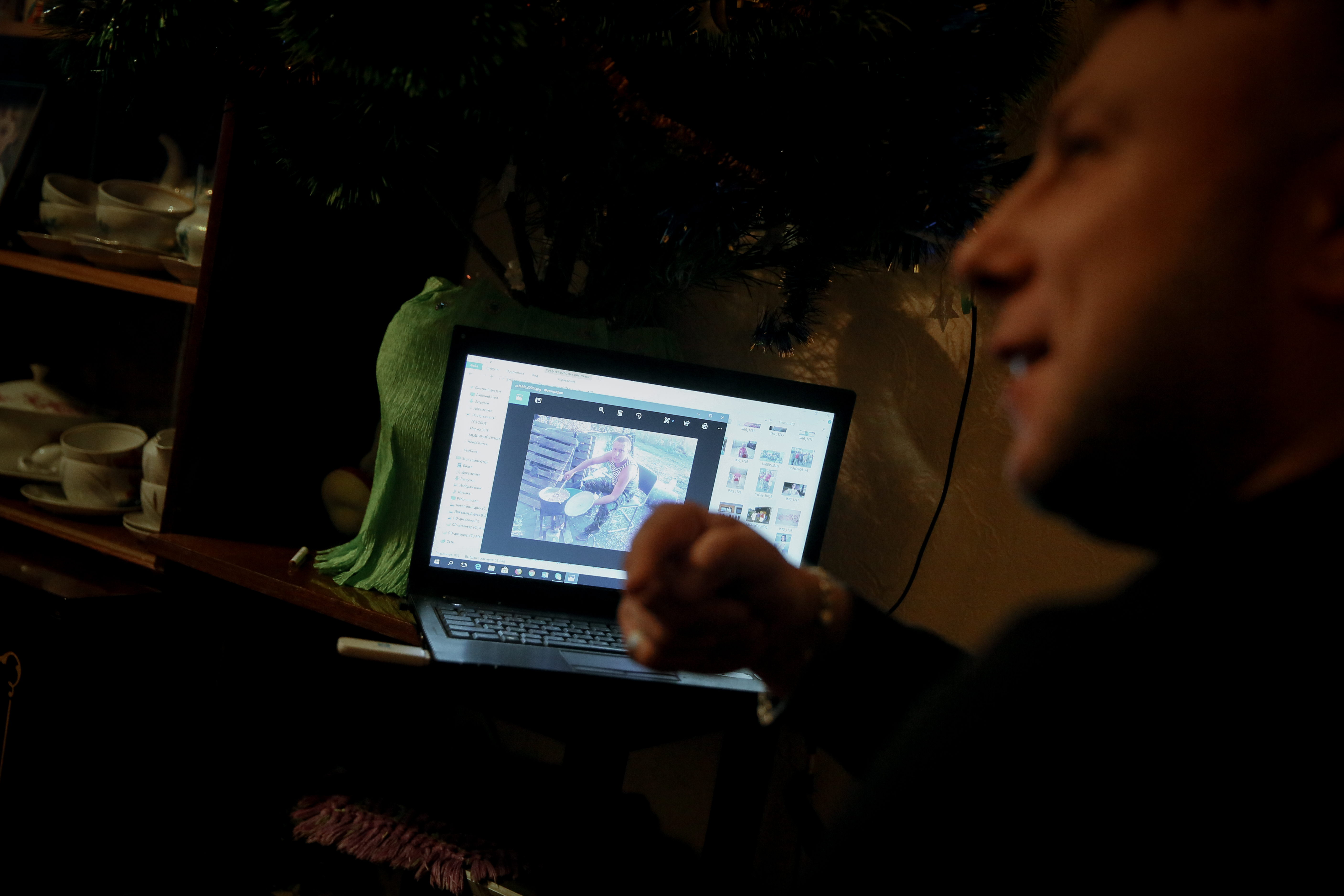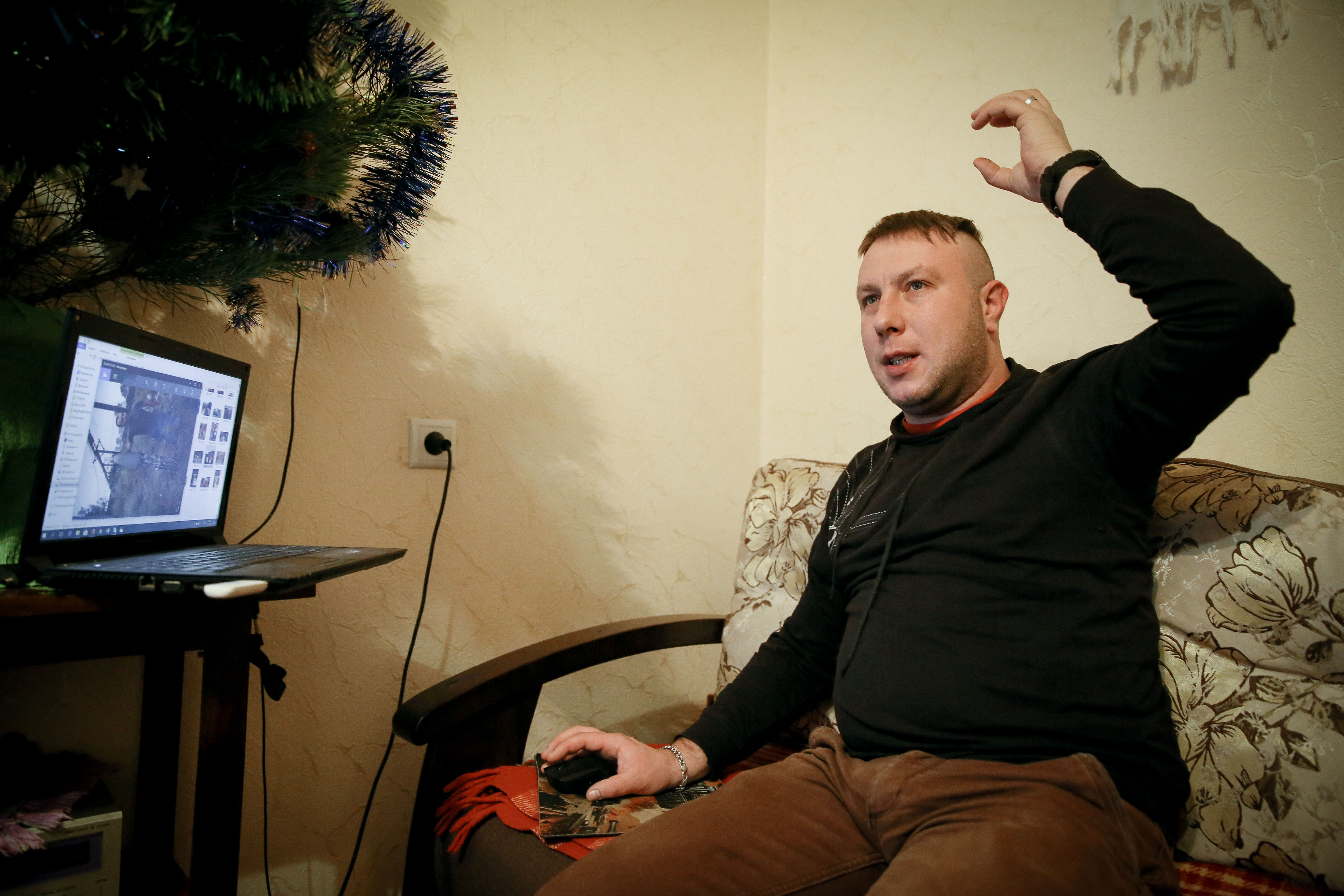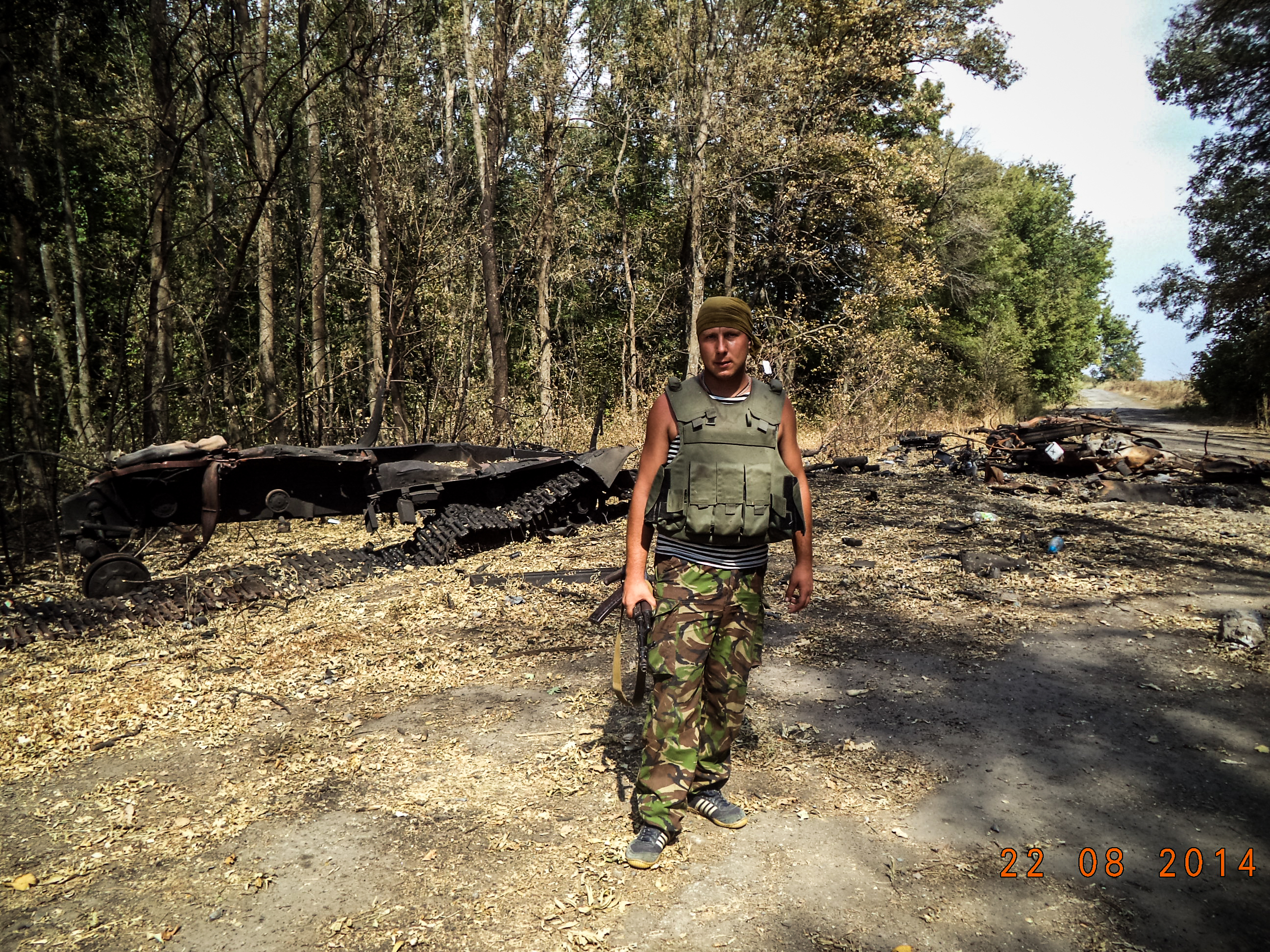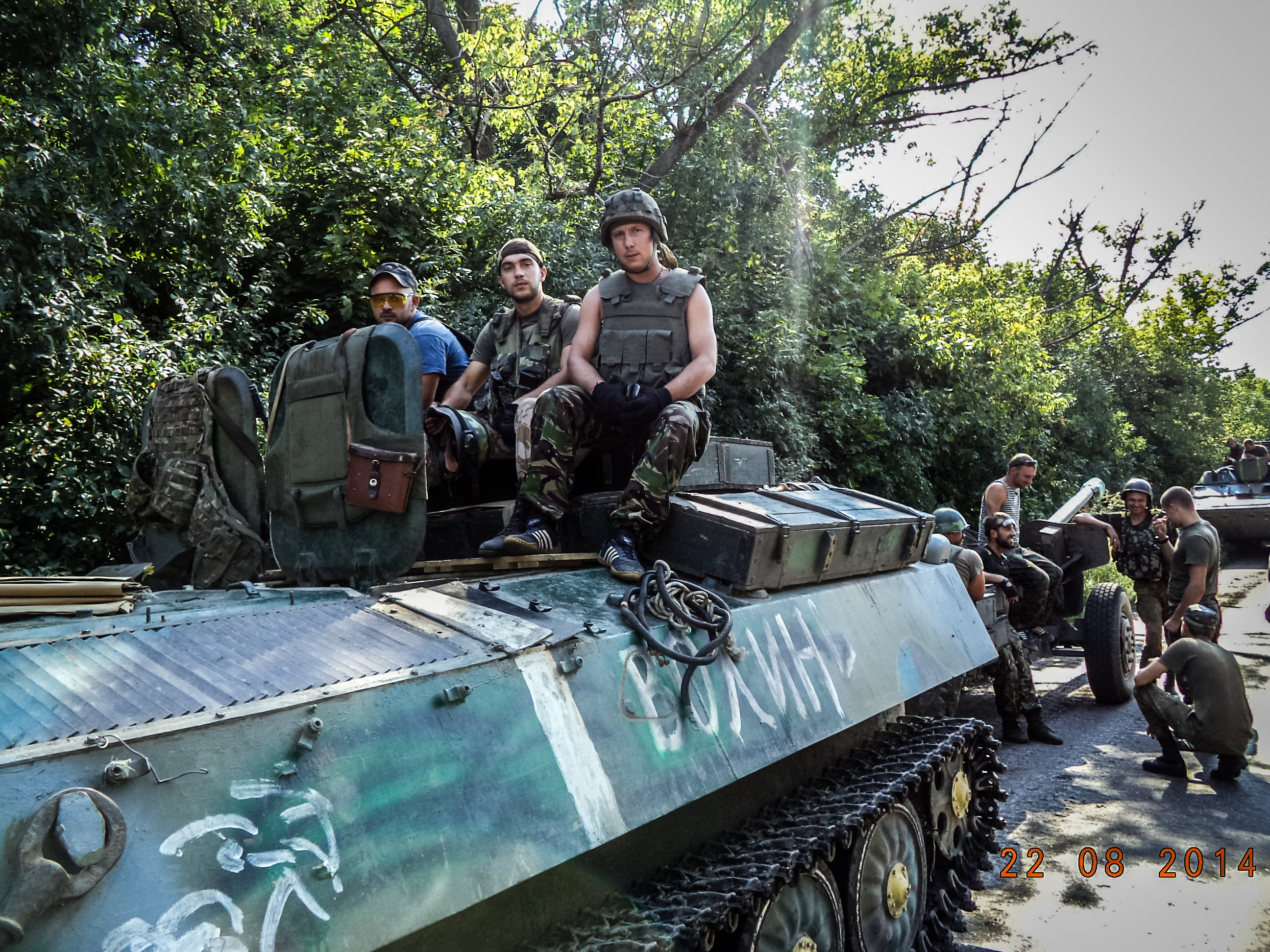Aug. 24, midday. At a crossroad between the villages of Kuteinykove and Dzerkalne
As Ukrainian troops paraded in the streets of Kyiv on Ukraine’s Independence Day, soldiers of the anti-tank unit of the 51st Mechanized Brigade, deployed in the Donbas, had their first exchanges of fire with the Russian military.
The fighting started when three airborne combat vehicles with the white circles painted on them drove out of a line of trees.
At their position in the field just 1.2 kilometers away, near the village of Kuteinykove, Ukrainian soldiers carefully studied the unusual insignia. Ukrainian forces marked their own armored vehicles with two parallel white stripes.
The Ukrainians realized the vehicles had to be Russian ones. They opened fire and hit all three of the armored vehicles in turn. Then they fired into the trees and apparently hit a vehicle with ammunition, which exploded.
“Then, on Aug. 24, we met with the Russians for the first time,” Taras Samchuk, one of the soldiers of the anti-tank unit remembers.
Later that day, next to the village of Dzerkalne another unit of the 51st brigade captured 10 Russian paratroopers from the 331st Guards Airborne Regiment, based in Kostroma, 300 kilometers north-east of Moscow, who had escaped from the burnt out airborne combat vehicles. In the coming days, the soldiers were so widely shown by Ukrainian national TV that even Russian President Vladimir Putin had to comment, lying that they had “got lost” and turned up in Ukraine by accident. Dzerkalne is more than 20 kilometers away from the Ukrainian-Russian border.
Russian artillery destroyed a compound feed plant in Kuteinykove – the position of the Ukrainian anti-tank unit in which Samchuk was fighting. So Captain Kostiantyn Koval, the unit’s commander, ordered them to move north-northwest from Kuteinykove, following the railway line leading to Ilovaisk.
They dug in near the village Mnohopilliya, another Ukrainian stronghold about midway between Kuteinykove and Ilovaisk, where General Ruslan Khomchak, the commander of the operation in Ilovaisk, had his headquarters.
“By the end of the day, Kuteinykove wasn’t ours anymore,” Samchuk said.
Second encounter with Russians
Positioned on a hill, the soldiers had a good view of the Russian military columns as they moved through Kuteinykove on Aug. 25.
“They were heading from Russia, some 75 or 100 vehicles. We were reporting to our higher commanders, asking if we were allowed to hit them by our artillery. But they didn’t allow us to shoot. We could only watch,” Samchuk said.
On Aug. 26, a Russian column of a dozen armored vehicles rushed towards Mnohopilliya, approaching the position of Samchuk’s unit. Samchuk, an assistant for the gun loader and also a medic, remembers that a brave gunner of his cannon fired warning shots, and received return fire from a machine gun. After that, the gunner opened fire and hit the first Russian multipurpose light armored transporter.
In the next couple of minutes, they hit two more Russian armored vehicles. But the situation was still desperate.
Their morale rose when a colonel, Yevhen Sydorenko, unexpectedly arrived to reinforce them in a captured Russian T-72B3 tank.
The Russians retreated, leaving their dead and wounded behind. Samchuk remembers finding a Russian soldier with the grave burns, who was lying behind a burnt-out armored vehicle.
“He told us: ‘Don’t kill me, brothers. We came here on military exercises,’” Samchuk said.
The Ukrainians didn’t believe him, given the fact that the Russian soldier had live ammunition, not the training blanks normally used in military exercises.
As he was evacuated by the soldiers of Dnipro 1 volunteer battalion, the wounded Russian gave his name to the medics, who said in a later interview that he was Alexander Desiatnikov of the 8th Motorized Rifle Brigade, based in the city of Borzoy in Chechnya.
Lucky escape
In the midst of war, Samchuk remembers that he appreciated the beauty of nature as never before. But he was also thinking about death a lot, given a desperate situation of the encircled Ukrainian troops.
So when the soldiers were ordered to form a military column early on Aug. 29, Samchuk’s spirits were raised: At least there was some hope, he thought.
The hope got stronger when the column started to move out from the village of Ahronomichne, just west of Mnohopilliya. The Russian soldiers who were standing at the roadside waved to their Ukrainians counterparts.
“Some our guys pointed at their Kalashnikov showing not to shoot. The Russians gestured to us – ‘No-no, no shooting,’” Samchuk said.
But about an hour the Russians started shelling the column from all sides.
Samchuk says he owes his life to a multipurpose light armored transporter.
This small, light and low-profile armored vehicle drove through a field of tall sunflowers, which made it hard for the enemy to see. It saved the lives of its seven-man crew and another 25 soldiers that they managed to pick up on the way. It was the only armored vehicle out of the entire military column that managed to get away from the Russian ambush.
A mortar shell nearly hit the vehicle, but an infantry fighting vehicle in front of them took the blast. The torn-off head of a soldier dropped at Samchuk’s feet.
“It was a meat grinder, chaos,” Samchuk said. “Some of our vehicles collided with each other. Sometimes our vehicles rolled over people who had fallen off vehicles.”
Eventually, they reached Komsomolske (now renamed by the Ukrainian government Kalmiuske), a town that was still under Ukrainian control. The soldiers washed at a local petrol station and took a picture of the multipurpose light armored transporter that had saved them.
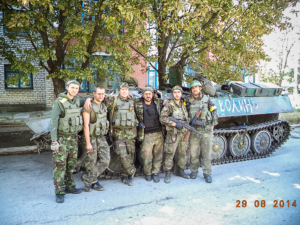
Taras Samchuk, third from the left, and his fellow soldiers stand by multipurpose light armored transporter in Komsomolske (now Kalmiuske) after leaving Ilovaisk.
Samchuk, who was a bartender before the war, is the only one of its crew who is still serving in the army. His 51st brigade was disbanded in December 2014, after some of its soldiers were accused of desertion during the fight for Ilovaisk.
Samchuk believes this was unfair.
“They were just covering up the mistakes of the military leadership,” he said.
The 51st Mechanized Brigade was based in the city of Volodymyr Volynsky in Volyn Oblast, and drew its servicemen mostly from the residents of western Ukraine. Formed mostly of drafted soldiers, the brigade suffered heavy losses at the very beginning of Donbas war. On May 22, 2014, 17 of its soldiers were killed by Russian-led fighters near the town of Volnovakha – the first big loss of Ukrainian troops in the war. The brigade also endured heavy losses during the fight for Savur Mohyla, a strategic height near Donetsk. More than 40 of the brigade’s soldiers were killed in fighting around Ilovaisk. In December 2014, the brigade was disbanded, with the 14th brigade being formed to replace it.



